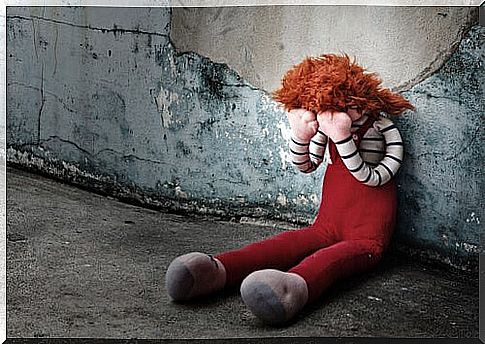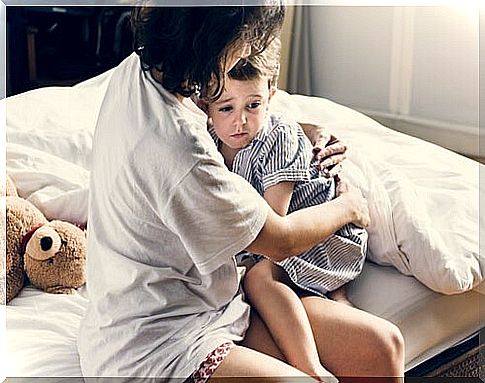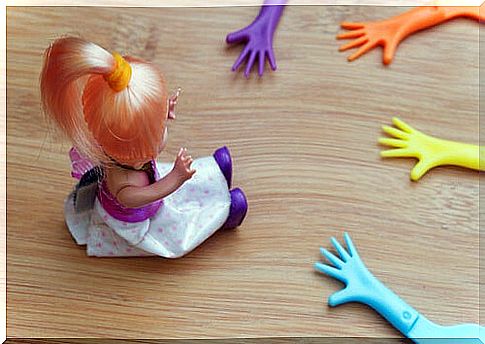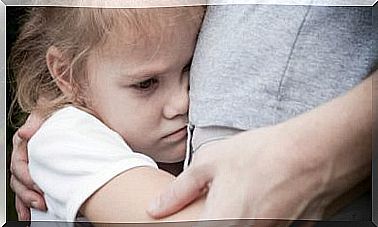Do You Know What Pedophobia Is?

In the world there are many types of fears. The best known are usually related to insects, airplanes, darkness, closed spaces … Actually there are more than people imagine. Sometimes fear crosses the dark side line and turns into a phobia.
Within the world of fears there are some related to childhood. It has nothing to do with fear of children or fear of parenting responsibility. It is something terrifying that blocks many children but also adults, and that is related to the most harmless thing in the world: dolls.
Plastic, porcelain, fantasy babies or with a certain appearance of reality … It is enough to enter a toy store to understand the variety of dolls that exist according to the world we want to go to. Thus, something completely innocent can come to be perceived as the greatest paralyzing threat.
What is pediphobia?
Pedophobia is a paralyzing, unwarranted and persistent fear of dolls. It can be included in the group of simple phobias. It can be a limiting phobia as long as we are in direct and physical contact with children who play with these types of toys, when entering rooms or even walking around shops.

Let’s imagine an adult person who meets a doll in a house to which he is visiting. If you suffer from this phobia, it is likely that you will start to feel sweating, rapid heartbeat, tingling, rapid breathing, palpitations, muscle tension or a knot in your stomach. You may also feel restless, overwhelmed, blocked, or even want to cry. In addition, the fact of knowing that it is something as “silly” as a doll generates in the person a feeling of frustration with himself.
Where does the fear of dolls come from?
The fear of flying, the dark, insects … all these fears have something in common. We make sense to all of them if we look for causes to explain the phobia. The fear of dolls or pedophobia seems incomprehensible because these types of toys are far from posing a real threat. That is, no doll is going to cause us to die, it is going to attack us, bite us or spread diseases. There is no direct cause related to this irrational fear.

To find an explanation, studies turn to different theories. The first is the classical way of psychology to explain some simple phobias: classical conditioning. Let’s imagine a fearful child, with few coping strategies and who lives a traumatic experience with a doll that generates anxiety or fright.
If he grows up with this fear, and throughout his life he avoids and runs away from situations where a toy of these characteristics is present, it will reinforce his fear. Other ideas are related to mythology or fables. One may think that the doll is actually alive and pretending to be inanimate. The more real the doll looks, the worse the feeling.
Overcoming the phobia
One of the classic ways to overcome this type of phobias is to expose yourself to it. Psychology professionals resort to relaxation, breathing and desensitization techniques, where control of the body facilitates the regulation of sweat, tachycardia or tingling. Once the tools to manage anxiety are controlled, the step is gradually to confront the doll or situations where the dolls are present.

It is very important to follow the therapist’s instructions so as not to generate a rebound effect, when you want to solve the problems at once and without support. It is not a simple process: simultaneously the person copes not only with the situation but with his thoughts. The work to reconstruct these irrational ideas often requires an understanding of their origin and the factors that have sustained them.
What do I think when I find myself in that situation? How do I relate it to the element that causes me fear? Why? It is important to seek alternative thoughts, associate them with the correct elements, and be courageous in trying to overcome fears. Pediphobia, like other problems of simple phobias, is a problem with a high rate of improvement, so it is a shame to keep it and limit your life for it. Before, and better than avoidance, seek a therapeutic solution.









